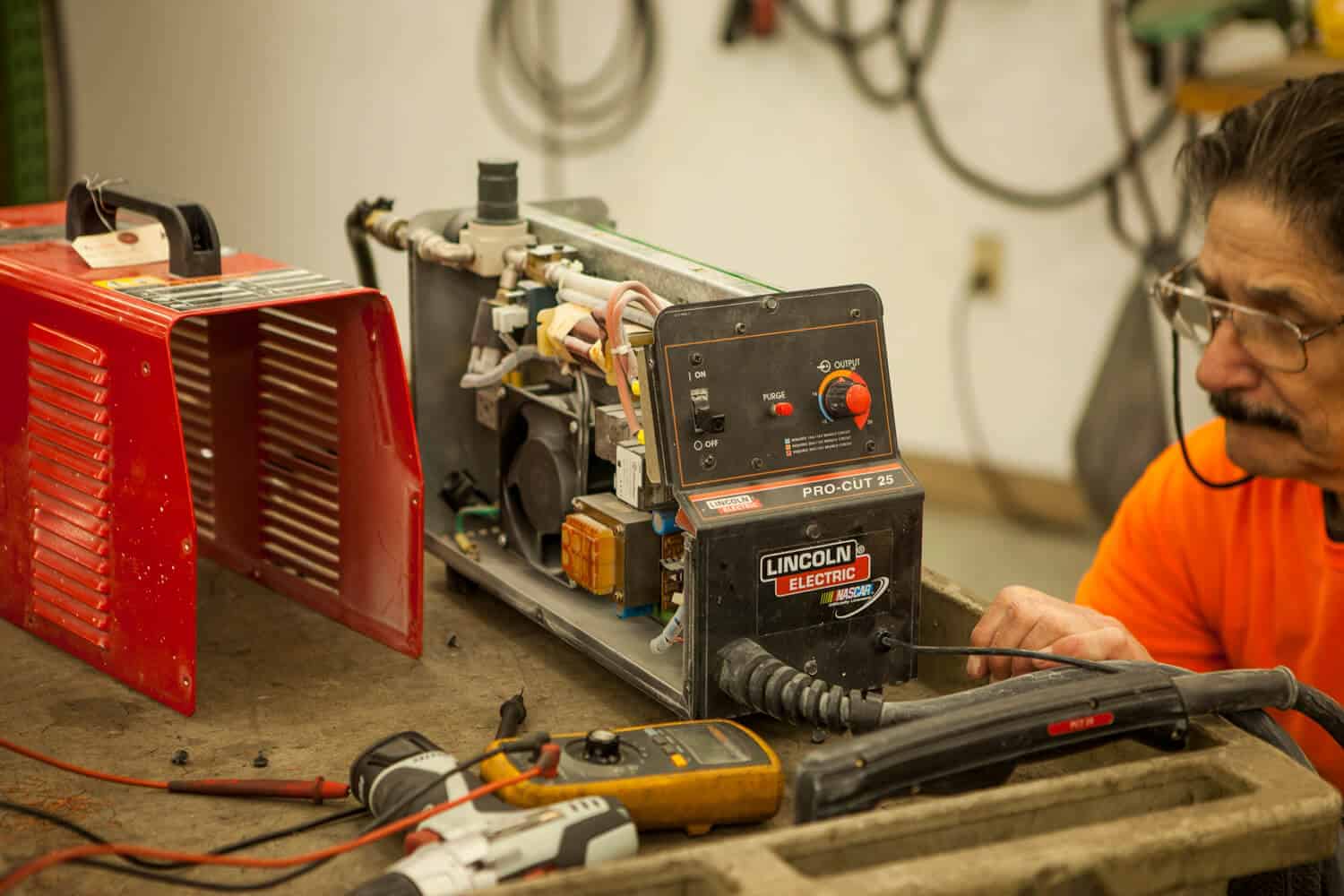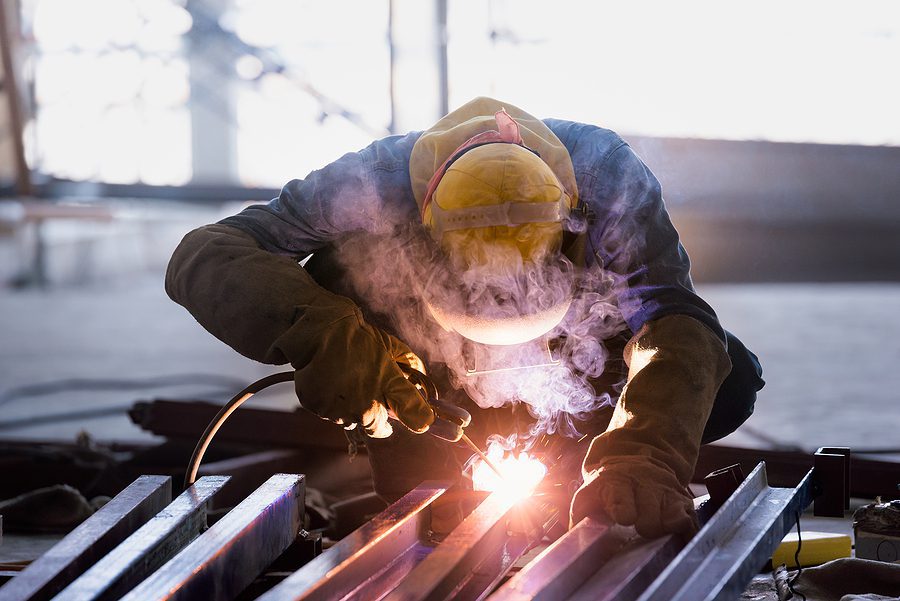Everything you should know about overheating prevention from Montana Mobile Welding and Repair
Wiki Article
All About Welding: Trick Insights Into Techniques and Best Practices for Success
Welding incorporates a range of methods, each suited for details materials and applications. Recognizing these techniques, such as GMAW, SMAW, and TIG, is vital for accomplishing perfect outcomes. Furthermore, the ideal devices and security practices can not be ignored. As prep work and fixing play vital functions in the welding process, mastering these aspects can significantly enhance the top quality of the last item. What are the key elements that ensure a successful weld?Recognizing Different Welding Techniques
Welding methods include a selection of techniques, each suited to details applications and products. Among one of the most common techniques are Gas Metal Arc Welding (GMAW), Secured Metal Arc Welding (SMAW), and Tungsten Inert Gas Welding (TIG) GMAW, also referred to as MIG welding, is popular for its speed and convenience, making it optimal for thin products. SMAW, or stick welding, is favored for its simplicity and effectiveness in outdoor environments, especially with thicker metals. TIG welding supplies precision and control, making it ideal for intricate work and non-ferrous steels (Belgrade). Each strategy has its one-of-a-kind advantages and factors to consider, permitting welders to pick the very best method based on the task's demands, product kind, and wanted results. Comprehending these techniques is vital for successful weldingEssential Welding Equipment and Devices
While different welding strategies call for particular abilities, the best tools and devices are similarly vital for accomplishing top quality outcomes. Important welding tools consists of welding devices, which vary relying on the technique-- such as MIG, TIG, or stick welding. Protective equipment, consisting of aprons, headgears, and handwear covers, warranties security and comfort during the procedure. On top of that, fixtures and clamps assist secure products in position, making sure precision in welds. Consumables like welding rods, cable, and shielding gas are likewise important parts that influence the quality of the weld. Additionally, devices such as cutters and grinders facilitate surface prep work and post-weld ending up, contributing to an expert result. Buying premium devices eventually improves the effectiveness and performance of welding projects.Safety And Security Practices in Welding
Appropriate safety and security practices are important in the welding sector to protect employees from prospective threats. Welders need to use ideal individual safety equipment (PPE), including safety helmets with appropriate shading, handwear covers, and flame-resistant clothing. Ample air flow is vital to lower direct exposure to unsafe fumes and gases generated during the welding process. Additionally, workers ought to be learnt the proper handling of welding devices to avoid accidents. Fire safety actions, such as keeping combustible products away from the welding area and having fire extinguishers easily available, are essential. Regular evaluations of devices and work areas can help identify potential hazards prior to they result in accidents. By adhering to these security techniques, welders can create a more secure working environment and decrease dangers related to their profession.Preparing Products for Welding
Preparing products for welding is a crucial step that significantly affects the quality and integrity of the end product (Montana Mobile Welding and Repair Belgrade Welding). Proper prep work involves cleaning up the surfaces to eliminate impurities such as corrosion, oil, and dirt, which can jeopardize the weld. Strategies such as grinding, sanding, or utilizing solvents are generally employed to achieve a tidy surface area. In addition, making certain that the products mesh well is crucial; spaces can cause weak welds. It's additionally essential to consider the positioning and positioning of the parts, as this will certainly impact the convenience of welding and the last outcome. Ultimately, selecting the proper filler material and guaranteeing compatibility with the base metals is essential for achieving solid, sturdy weldsTips for Achieving High-Quality Welds
Attaining high-grade welds calls for interest to detail and adherence to best practices throughout the welding process. Proper joint prep work is important, making certain surfaces are complimentary and tidy from impurities. Selecting the appropriate filler material and welding method based upon the base steels is vital for optimal bonding. Keeping regular traveling rate and angle while welding can prevent problems and advertise harmony. Additionally, managing heat input is important; excessive warmth can bring about warping and weakened joints. Consistently evaluating the welds throughout the procedure allows for prompt adjustments if essential. Finally, employing appropriate post-weld treatments, such as cleaning and anxiety alleviation, can boost the toughness and stability of the weld, ultimately making certain a successful outcome.Fixing Typical Welding Issues
Welding commonly presents difficulties that can impact the top quality and integrity of the end product. Common issues such as porosity, inconsistent weld grains, and getting too hot can arise, each needing certain fixing methods. Recognizing these troubles is important for welders to boost their abilities and attain excellent results.Porosity Problems Explained
Although porosity can often be overlooked, it stays an important issue in welding that can endanger the integrity of an ended up item. Porosity describes the presence of little gas pockets within the weld grain, which can lead and compromise the joint to early failure. This trouble typically develops from contaminants, wetness, or incorrect securing gas protection throughout the welding process. To reduce porosity, welders need to validate that the base products are clean and dry, utilize suitable shielding gases, and preserve constant welding parameters. Routinely evaluating the equipment and atmosphere can also assist recognize potential problems prior to they materialize in the weld. Addressing porosity effectively is vital for accomplishing strong, sturdy welds that satisfy quality standards.
Irregular Weld Beans
Inconsistent weld grains can substantially affect the top quality and strength of an ended up product. Numerous variables add to this issue, including inappropriate travel rate, inaccurate amperage setups, and irregular electrode angles. When the welder moves also rapidly, a grain might appear narrow and do not have penetration, while moving also slowly can cause too much build-up. Additionally, making use of the wrong amperage can cause either damaging or excessive spatter, both of which concession weld stability. The welder's technique, such as inconsistent lantern motion, can also result in unequal grain look. To reduce these troubles, welders should concentrate argon tanks on maintaining consistent, controlled movements and making certain correct tools settings to achieve harmony in their welds. Consistency is essential to achieving trusted and strong welds.Getting Too Hot and Bending Issues
Too much heat during the welding process can cause significant overheating and warping issues, affecting the structural stability of the workpiece. These problems frequently materialize as distortion, which can compromise positioning and fit-up, making more setting up testing. Aspects adding to overheating consist of the choice of welding parameters, such as voltage and travel rate, in addition to the kind of material being bonded. To reduce these concerns, welders need to keep regular travel speed and proper warm input while checking the workpiece temperature. Furthermore, preheating or post-weld warmth treatment can help ease stress and anxieties caused by fast cooling - Montana Mobile Welding and Repair Belgrade Fabrication. Regular evaluation and adherence to ideal methods are necessary in stopping overheating and making certain the durability and integrity of welded frameworksRegularly Asked Inquiries
What Are the Job Opportunities in the Welding Sector?
The welding market provides varied job chances, consisting of positions as welders, educators, assessors, and designers. Professionals can function in production, building and construction, aerospace, and automobile markets, gaining from solid need and affordable incomes in numerous roles.Exactly How Can I Improve My Welding Rate Without Giving Up Top Quality?
To boost welding speed without giving up top quality, one need to practice reliable strategies, preserve equipment, enhance settings, and boost hand-eye sychronisation. Regular training and looking for responses can also greatly add to attaining quicker, premium welds.What Certifications Are Available for Welders?
Countless certifications exist for welders, including those from the American Welding Culture (AWS), the National Center for Building Education and Study (NCCER), and numerous industry-specific organizations. These credentials enhance employability and show skill proficiency.Exactly How Does Welding Impact the Residences of Metals?
Welding affects the residential or commercial properties of steels by changing their microstructure, which can bring about adjustments in strength, ductility, and firmness. Warmth input and cooling rates during the procedure significantly impact these product features.Can I Bonded Dissimilar Metals Together?

Report this wiki page